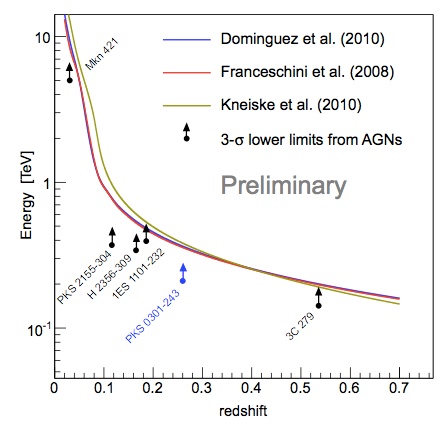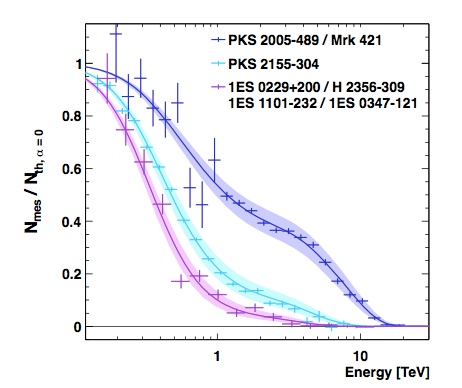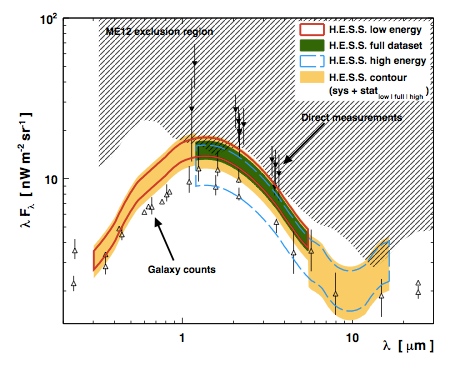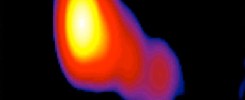January 2013
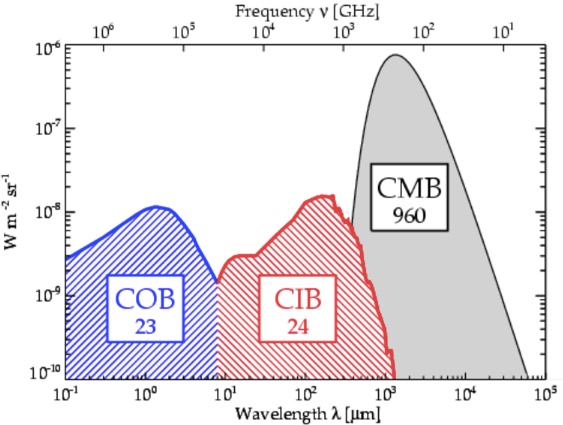
The extragalactic background light (EBL) is the diffuse radiation with the second highest energy density in the Universe after the cosmic microwave background. Its spectral energy distribution is composed of two bumps: the cosmic optical background (COB) and the cosmic infra-red background (CIB), see top figure. The COB is mainly due to the radiation from stars in the optical (O) to near infrared (IR), while the CIB stems from UV/optical light absorbed by dust and re-radiated in the infrared (for a review, see e.g. Hauser & Dwek 2001). The level of EBL measures the amount of light emitted by stars throughout the evolution of the Universe, depends on the process of galaxy formation and evolution, and is hence of cosmological interest.
Direct measurements of the EBL flux density prove to be difficult, mainly because foreground contamination, e.g. by the zodiacal light, can result in an overestimation. Gamma rays offer an independent way of probing the level of EBL: above electron-positron pair production threshold – for a TeV gamma ray reached when “colliding” with a background photon of sub-micron wavelength – gamma rays are absorbed when propagating over extragalactic distances, with absorption rapidly increasing above a red-shift dependent energy (see Fig. 1).
Using spectra of seven blazars at redshifts between z=0.01 and z=0.19, with a total of about 10^5 detected gamma rays, H.E.S.S. data were searched for absorption features. Spectra were fit with various parametrizations such as pure or modified power law spectra, multiplied with the predicted absorption coefficient reflecting the generic shape of EBL spectra, but leaving the absolute intensity of the EBL as a free parameter. Unlike in earlier studies, where only upper limits on the EBL could be derived (e.g. SOM Dec. 2005), EBL absorption features are now detected with high significance – close to 9 sigma – and are required to describe the spectra. The detected absorption features and their variation with redshift are illustrated in Fig. 2. Fig. 3 shows the obtained flux density of the EBL; H.E.S.S. data probe the wavelength range from a fraction of a micron to about 10 microns. The measured level is slightly above the lower limits obtained by counting galaxies visible in sky surveys.
A analogous measurement was reported using Fermi data, covering lower energies and hence higher redshifts (Ackermann et al. 2012).
Reference: “Measurement of the extragalactic background light imprint on the spectra of the brightest blazars observed with H.E.S.S.”, H.E.S.S. Collaboration, A. Abramowski et al., arXiv:1212.3409, Astron. Astrophys. in press.
